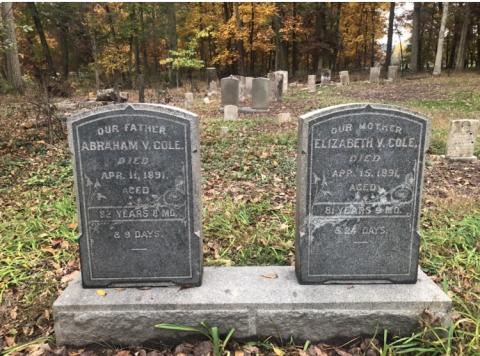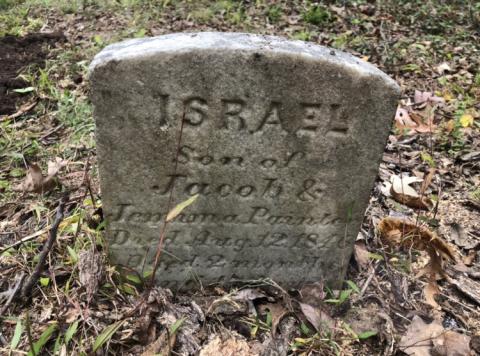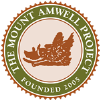Just north of Flemington, close to the village of Stanton, there’s a mid 19th century cemetery that’s long been overgrown by trees and brush. Located at the bend along Woodschurch Road, you can catch a glimpse of it as you slow your car to navigate the narrow road. That’s what happened to me one weekend in early autumn. Lo and behold, I saw two gentlemen diligently clearing and improving the graveyard. How peculiar. Certainly not a sight you see every day! Little did I know that this was the Mount Amwell Project (MTAP) in action. Thanks to their efforts, particularly the dedicated labor of David Reading and David Voorhees, that cemetery — a place of eternal rest for long-departed Hunterdon County settlers — is now getting a second lease on life.
“We signed an agreement with Readington Twp. on August 2018 and started to clear and clean the cemetery in November of that year,” said Mr Reading. “The trees were taken down by March 2019 and we attempted to get the Township to clear them working through the Readington Twp. Historical Commission. In August of this year they arranged to have a contractor remove 8 trees.” The cemetery in question once belonged to the Methodist Episcopal Church that documents say was located across the road, but which stands no more.
Here’s what one historic document says: “This church is in Readington Township, on a cross road leading eastward from Rowland’s Mills to meet the Flemington-White House Road, and about a third of a mile from the latter. The original church stood on this ground, but the present building (1918), erected in 1854, is about 200 feet to the north… the graveyard is about 200 feet square and is next east of the Grove School, where a public school had stood since 1776.” Among the families amply represented in the graveyard are Cole, Painter, Rowland, Sharp, Smith and Yorks.
Reflecting the high child mortality rates that were common before the 20th century, there are many graves of children who passed away under the age of 10. Cause of death, however, is not indicated. Such graves are often emotional to look at, and give us insight into the hardships that these families, especially young mothers, faced before the modern era. Take for example the grave of baby Israel Painter, son to Jacob and Jemima Painter. He died August 1846, age 2 months and 17 days.
No one knows why he died, but we know that cholera was a problem at this time in New York City and its surrounding areas. Israel’s parents continued to live long lives, however. His mother Jemima died on Feb. 25, 1886; and his father Jacob died June 22, 1890. Interestingly enough, there’s a grave for one David Painter who died Nov. 16, 1856. He’s listed in cemetery documents as the “adopted son of David and Rebecca Lowe.”
Once again, we lack details and can only make and educated guess as to how David found himself in the care of the Lowes, and who they were. Alas, all these true stories have literally gone to the grave, and we might never know. But efforts such as the Mount Amwell Project help to preserve and shed some light on the early past of Hunterdon County.




